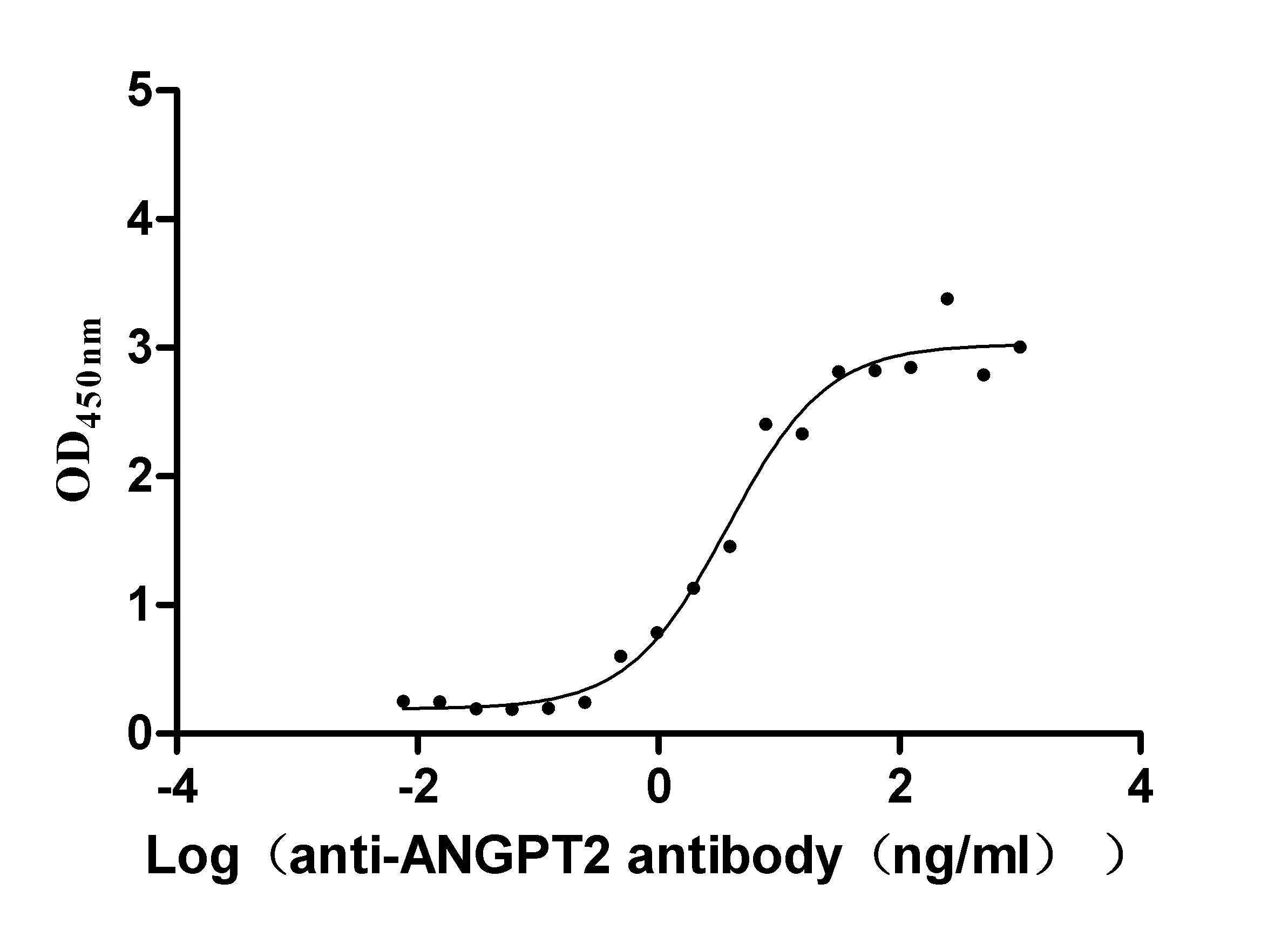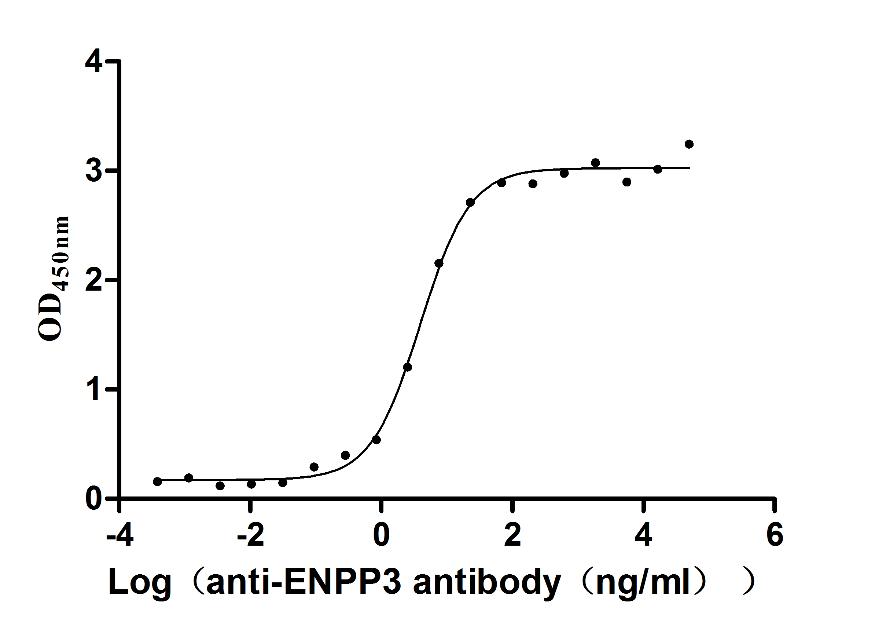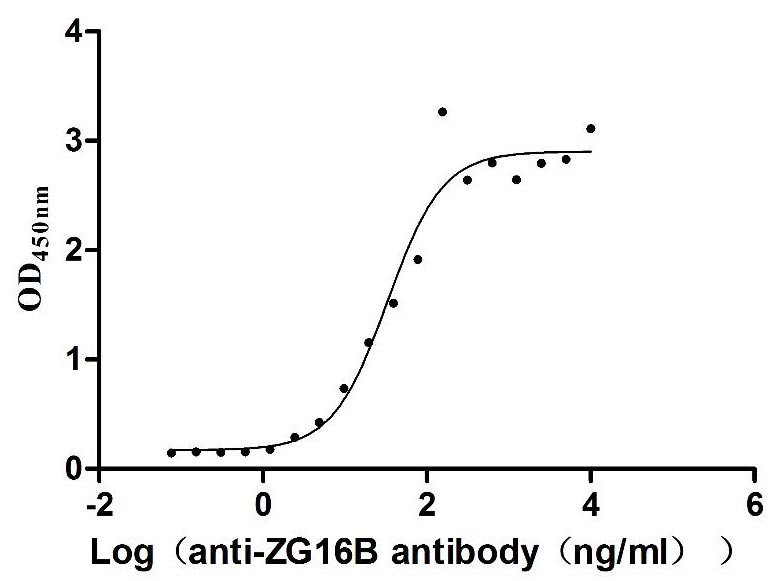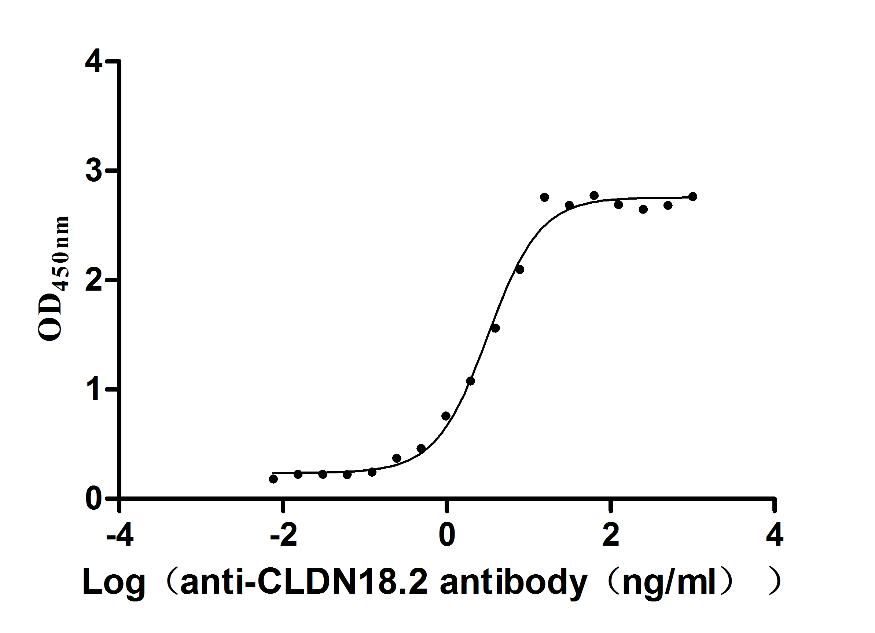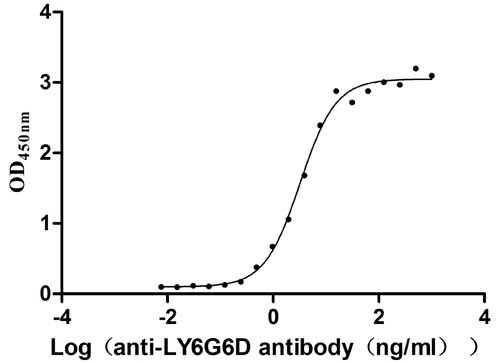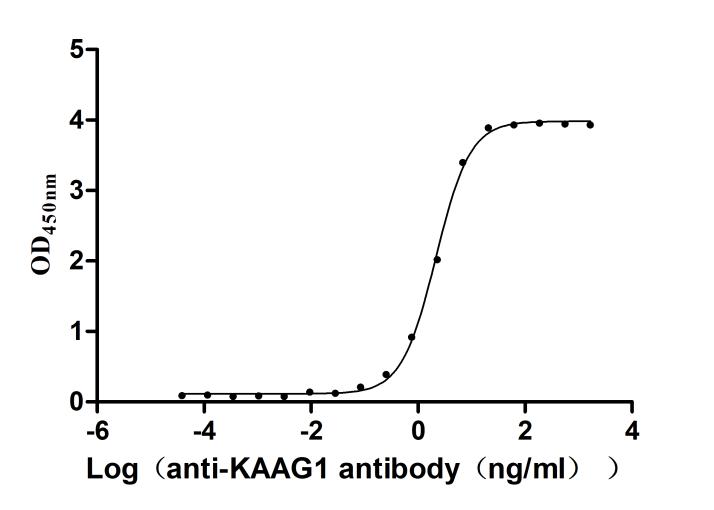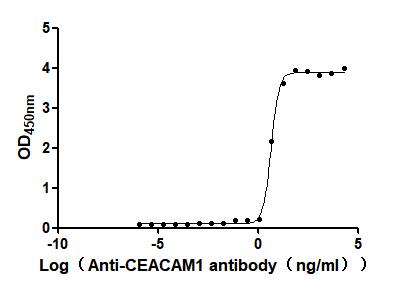Recombinant Mouse Leucine-rich repeat serine/threonine-protein kinase 2 (Lrrk2), partial
-
中文名稱:小鼠Lrrk2重組蛋白
-
貨號:CSB-YP716267MO
-
規(guī)格:
-
來源:Yeast
-
其他:
-
中文名稱:小鼠Lrrk2重組蛋白
-
貨號:CSB-EP716267MO
-
規(guī)格:
-
來源:E.coli
-
其他:
-
中文名稱:小鼠Lrrk2重組蛋白
-
貨號:CSB-EP716267MO-B
-
規(guī)格:
-
來源:E.coli
-
共軛:Avi-tag Biotinylated
E. coli biotin ligase (BirA) is highly specific in covalently attaching biotin to the 15 amino acid AviTag peptide. This recombinant protein was biotinylated in vivo by AviTag-BirA technology, which method is BriA catalyzes amide linkage between the biotin and the specific lysine of the AviTag.
-
其他:
-
中文名稱:小鼠Lrrk2重組蛋白
-
貨號:CSB-BP716267MO
-
規(guī)格:
-
來源:Baculovirus
-
其他:
-
中文名稱:小鼠Lrrk2重組蛋白
-
貨號:CSB-MP716267MO
-
規(guī)格:
-
來源:Mammalian cell
-
其他:
產(chǎn)品詳情
-
純度:>85% (SDS-PAGE)
-
基因名:
-
Uniprot No.:
-
別名:Lrrk2; Leucine-rich repeat serine/threonine-protein kinase 2; EC 2.7.11.1; EC 3.6.5.-
-
種屬:Mus musculus (Mouse)
-
蛋白長度:Partial
-
蛋白標(biāo)簽:Tag?type?will?be?determined?during?the?manufacturing?process.
The tag type will be determined during production process. If you have specified tag type, please tell us and we will develop the specified tag preferentially. -
產(chǎn)品提供形式:Lyophilized powder
Note: We will preferentially ship the format that we have in stock, however, if you have any special requirement for the format, please remark your requirement when placing the order, we will prepare according to your demand. -
復(fù)溶:We recommend that this vial be briefly centrifuged prior to opening to bring the contents to the bottom. Please reconstitute protein in deionized sterile water to a concentration of 0.1-1.0 mg/mL.We recommend to add 5-50% of glycerol (final concentration) and aliquot for long-term storage at -20℃/-80℃. Our default final concentration of glycerol is 50%. Customers could use it as reference.
-
儲存條件:Store at -20°C/-80°C upon receipt, aliquoting is necessary for mutiple use. Avoid repeated freeze-thaw cycles.
-
保質(zhì)期:The shelf life is related to many factors, storage state, buffer ingredients, storage temperature and the stability of the protein itself.
Generally, the shelf life of liquid form is 6 months at -20°C/-80°C. The shelf life of lyophilized form is 12 months at -20°C/-80°C. -
貨期:Delivery time may differ from different purchasing way or location, please kindly consult your local distributors for specific delivery time.Note: All of our proteins are default shipped with normal blue ice packs, if you request to ship with dry ice, please communicate with us in advance and extra fees will be charged.
-
注意事項(xiàng):Repeated freezing and thawing is not recommended. Store working aliquots at 4°C for up to one week.
-
Datasheet :Please contact us to get it.
靶點(diǎn)詳情
-
功能:Serine/threonine-protein kinase which phosphorylates a broad range of proteins involved in multiple processes such as neuronal plasticity, autophagy, and vesicle trafficking. Is a key regulator of RAB GTPases by regulating the GTP/GDP exchange and interaction partners of RABs through phosphorylation. Phosphorylates RAB3A, RAB3B, RAB3C, RAB3D, RAB8A, RAB8B, RAB10, RAB12, RAB35, and RAB43. Regulates the RAB3IP-catalyzed GDP/GTP exchange for RAB8A through the phosphorylation of 'Thr-72' on RAB8A. Inhibits the interaction between RAB8A and GDI1 and/or GDI2 by phosphorylating 'Thr-72' on RAB8A. Regulates primary ciliogenesis through phosphorylation of RAB8A and RAB10, which promotes SHH signaling in the brain. Together with RAB29, plays a role in the retrograde trafficking pathway for recycling proteins, such as mannose-6-phosphate receptor (M6PR), between lysosomes and the Golgi apparatus in a retromer-dependent manner. Regulates neuronal process morphology in the intact central nervous system (CNS). Plays an important role in recruiting SEC16A to endoplasmic reticulum exit sites (ERES) and in regulating ER to Golgi vesicle-mediated transport and ERES organization. Positively regulates autophagy through a calcium-dependent activation of the CaMKK/AMPK signaling pathway. The process involves activation of nicotinic acid adenine dinucleotide phosphate (NAADP) receptors, increase in lysosomal pH, and calcium release from lysosomes. Phosphorylates PRDX3. By phosphorylating APP on 'Thr-743', which promotes the production and the nuclear translocation of the APP intracellular domain (AICD), regulates dopaminergic neuron apoptosis. Independent of its kinase activity, inhibits the proteosomal degradation of MAPT, thus promoting MAPT oligomerization and secretion. In addition, has GTPase activity via its Roc domain which regulates LRKK2 kinase activity.
-
基因功能參考文獻(xiàn):
- In conclusion, Lrrk2 is a powerful regulator of Na(+)/K(+) -ATPase expression and activity in dendritic cells. PMID: 28120865
- These results implicate the stress-responsive machinery composed of Rab7L1, LRRK2, phosphorylated Rab8/10, and their downstream effectors in the maintenance of lysosomal homeostasis. PMID: 30209220
- Genetic susceptibility in the form of LRRK2 mutation conferred a significant vulnerability to long-term environmental toxicity as the mice aged over half their lifespan, involving reduced striatal mitochondrial Complex-I levels. PMID: 28098219
- LRRK2-induced dopaminergic and norepinephrine neurodegeneration is kinase-dependent and can occur in a cell-autonomous manner. PMID: 29386392
- Findings suggest the importance of murine LRRK2 G2019S variant in hippocampal and striatal neurotransmission, but that the transgene didn't appear to be involved in functional behavioral and stress-like hormonal and cytokine changes provoked by inflammatory insults. PMID: 28893563
- LRRK2 functions together with a second Parkinson's disease-associated gene, RAB7L1, within an evolutionarily conserved genetic module in diverse cellular contexts. PMID: 27424887
- Slowing of dopamine transients is observed with age in littermates, suggesting premature ageing of dopamine synapses in LRRK2 G2019S knock-in mice. PMID: 28930069
- This study demonstrated that at old age the homozygous LRRK2 R1441C animals exhibit clear phenotypes related to the prodromal phase of PD such as impairments in fine motor tasks, gait, and olfaction. PMID: 28576705
- inhibition of LRRK2 could not only decrease the expression of inflammatory cytokines, but also recover autophagic function of microglia. PMID: 29408508
- Study showed that LRRK2 phosphorylation is required for LRRK2 to bind to Fbxl18, and that this interaction is important for regulating the amount of LRRK2 via ubiquitination of LRRK2 by the SCFFbxl18 ubiquitin ligase and subsequent proteasomal degradation of LRRK2. We also show that LRRK2 can induce caspase 8 mediated cell death and that the degradation of LRRK2 mediated by Fbxl18 can prevent LRRK2-mediated toxicity. PMID: 27890708
- Loss of LRRK2 causes increased canonical Wnt activity in vitro and in vivo PMID: 28103901
- LRRK2 disruptes aggresome formation for autophagy. PMID: 27364102
- findings revealed an essential role of LRRK in the survival of DA neurons and in the regulation of the autophagy-lysosomal pathway in the aging brain. PMID: 29056298
- PD mutation LRRK2 G2019S impairs synaptic vesicle endocytosis in ventral midbrain dopaminergic neurons. PMID: 29054882
- Parkinson's disease-linked LRRK2 mutations increased dendritic and mitochondrial calcium uptake in cortical neurons. PMID: 29038245
- Study found that the transcripts of the Lrrk2 gene in mice, which encodes a multifunctional protein with kinase and GTPase activities, is upregulated only in Inflexible Drinkers suggesting, for the first time, that the Lrrk2 pathway plays a major role in the compulsive ethanol intake behaviour of addicted subjects. PMID: 27411784
- promotes activation of NLRC4 inflammasome during Salmonella Typhimurium infection PMID: 28821568
- The Parkinson's disease-associated LRRK2 mutant G2019S impairs DRD1 internalization, leading to an alteration in signal transduction. The mutant forms of LRRK2 also affect receptor turnover by decreasing the rate of DRD2 trafficking from the Golgi complex to the cell membrane. PMID: 28582422
- In addition to disease modeling, leucine-rich repeat kinase 2 (LRRK2) konckin (KI) mice represent a valuable resource for pharmacological studies. PMID: 28202664
- These results of this study demonstrate that alpha-synuclein inclusion formation in neurons can be blocked and that novel therapeutic compounds targeting this process by inhibiting LRRK2 kinase activity may slow progression of PD-associated pathology. PMID: 27413152
- The findings of this study indicated that the G2019S mutation of LRRK2 imparts a gain-of-abnormal function to striatal spiny projection neurons activity and morphology during a stage of development when activity can permanently modify circuit structure and function. PMID: 27383589
- LRRK2 is expressed in enteric neurons and related to alterations of neuronal peptides and IgA. PMID: 28168579
- this study reveals that LRRK2 is a new positive regulator of Rip2 and promotes inflammatory cytokine induction through the Nod1/2-Rip2 pathway. PMID: 27830463
- an altered sphingolipid composition in Lrrk2(-/-) mouse brains, is reported. PMID: 27539321
- findings reveal a novel function of LRRK2 in regulating EPO expression and imply a potentially novel relationship between PD genes and hematopoiesis. PMID: 27872856
- In the present study demonstrated that the up-regulation of HOTAIR and LRRK2 in the midbrain of PD mice induced by MPTP. PMID: 26979073
- that mutant LRRK2 may impair synaptic vesicle dynamics via aberrant phosphorylation of N-ethylmaleimide sensitive fusion PMID: 26758690
- 14-3-3theta can regulate LRRK2 and reduce the toxicity of mutant LRRK2 through a reduction of kinase activity. PMID: 26546614
- LRRK2 has a role in microglia activation and sustainment of neuroinflammation. PMID: 26646749
- p21-activated kinase 6 (PAK6) as a novel interactor of leucine-rich repeat kinase 2 (LRRK2), a kinase involved in Parkinson's disease PMID: 26375402
- The data implicate gain of LRRK2 function in the pathogenesis of Parkinson disease PMID: 26282470
- LRRK2 regulates lysosome size, number and function in primary astrocytes and results show that expression of Parkinson's disease associated LRRK2 variants results in enlarged lysosomes PMID: 26251043
- Present results suggest that LRRK2 may play novel roles in both the immune system and the pathogenesis of various diseases. PMID: 26943952
- Selective expression of Parkinson's disease-related Leucine-rich repeat kinase 2 G2019S missense mutation in midbrain dopaminergic neurons impairs dopamine release and dopaminergic gene expression PMID: 26123485
- In the substantia nigra of LRRK2 transgenic mice, mRNA of three genes that promote cell death was upregulated, while the mRNA expression of seven genes that contribute to neurogenesis/neuroprotection was downregulated. PMID: 26363496
- G2019S mutation carrying LRRK2 microglia show retarded ADP-induced motility and delayed isolation of injury. LRRK2 knockdown microglia are highly motile compared with control cells. Lrrk2 phosphorylates and inhibits focal adhesion kinase. PMID: 26365310
- The Lrrk2 (-/-) mice developed lower levels of experimental autoimmune uveitis, delayed type hypersensitivity responses and cytokine production by lymphocytes than did their WT controls. PMID: 26067490
- The results indicate that LRRK2 kinase activity has an important role in the regulation of clathrin-mediated endocytosis of synaptic vesicles and subsequent neurotransmission at the synapse. PMID: 25501810
- Study demonstrates that mice expressing just one or two copies of mutant G2019S LRRK2 in their own genome have significantly elevated kinase activity and progressive dopaminergic alterations PMID: 25836420
- Membrane-associated LRRK2 co-localized to autophagosome membranes following either TLR4 stimulation or mTOR inhibition with rapamycin. PMID: 24682598
- Results suggest that LRRK2 alters actin dynamics and F-actin structure both in brain neurons and skin fibroblasts, indicate that LRRK2-dependent changes in the cytoskeleton might have functional consequences on postsynaptic NMDA receptor localization PMID: 25301747
- LRRK2 overexpression produces exploratory hypoactivity, recognition memory impairments, altered glutamatergic short-term plasticity and reduced dopamine tone. PMID: 25343991
- LRRK2 facilitates tau phosphorylation indirectly by recruiting tau or cdk5 rather than by directly phosphorylating tau PMID: 26268594
- we find that overexpression of LRRK2-G2019S increases basal synaptic efficiency through a postsynaptic mechanism, and disrupts long-term depression in the hippocampus PMID: 26269629
- Calyculin A treatment prevents inhibitor and PD mutant induced dephosphorylation and reverts LRRK2 to a lesser ubiquitinated species, thus directly implicating phosphatase activity in LRRK2 ubiquitination PMID: 25939886
- In vitro kinase assays and metabolic-labeling experiments in living cells confirmed MARK1 as an LRRK2 substrate. Moreover, we also showed that LRRK2 and MARK1 are interacting in eukaryotic cells. PMID: 25854701
- conclude that pathologic activation of LRRK2 regulates a significant component of the neuroinflammation associated with Hiv associatedneurocognitive disorder. PMID: 25834052
- Study evaluates LRRK2 expression in mouse and rat brain to aid in determining the normal function of LRRK2 and in selecting rodent models for studying pathogenic LRRK2 mutations PMID: 24633735
- Results indicate that mutant LRRK2 does not affect PGRN mRNA expression or intracellular PGRN protein levels/PGRN degradation in cell culture PMID: 24652679
- these results define a pathway for LRRK2 extracellular release, clarify one function of the LRRK2 14-3-3 interaction and provide a foundation for utilization of LRRK2 as a biomarker in clinical trials. PMID: 23886663
顯示更多
收起更多
-
亞細(xì)胞定位:Cytoplasmic vesicle. Perikaryon. Cell projection, axon. Cell projection, dendrite. Golgi apparatus membrane; Peripheral membrane protein. Endoplasmic reticulum membrane; Peripheral membrane protein. Cytoplasmic vesicle, secretory vesicle, synaptic vesicle membrane. Endosome. Lysosome. Mitochondrion outer membrane; Peripheral membrane protein.
-
蛋白家族:Protein kinase superfamily, TKL Ser/Thr protein kinase family
-
組織特異性:Expressed in the brain (at protein level). Detected throughout the adult brain. Expressed in deep cerebral cortex layers, superficial cingulate cortex layers, the piriform cortex, hippocampal formation, caudate putamen, substantia nigra, the basolateral a
-
數(shù)據(jù)庫鏈接:
Most popular with customers
-
Recombinant Dog Angiopoietin-2 (ANGPT2) (Active)
Express system: Mammalian cell
Species: Canis lupus familiaris (Dog) (Canis familiaris)
-
Express system: Mammalian cell
Species: Macaca fascicularis (Crab-eating macaque) (Cynomolgus monkey)
-
Recombinant Human Pancreatic adenocarcinoma up-regulated factor (ZG16B) (Active)
Express system: Mammalian cell
Species: Homo sapiens (Human)
-
Recombinant Macaca fascicularis Claudin 18.2 (CLDN18.2)-VLPs (Active)
Express system: Mammalian cell
Species: Macaca fascicularis (Crab-eating macaque) (Cynomolgus monkey)
-
Recombinant Human Lymphocyte antigen 6 complex locus protein G6d (LY6G6D) (Active)
Express system: Yeast
Species: Homo sapiens (Human)
-
Recombinant Human Kidney-associated antigen 1 (KAAG1) (Active)
Express system: E.coli
Species: Homo sapiens (Human)
-
Recombinant Human Interleukin-12 receptor subunit beta-1(IL12RB1),partial (Active)
Express system: Mammalian cell
Species: Homo sapiens (Human)
-
Express system: Mammalian cell
Species: Homo sapiens (Human)


